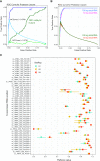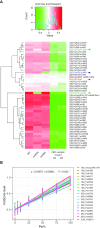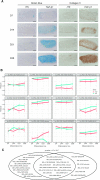HydraPsiSeq: a method for systematic and quantitative mapping of pseudouridines in RNA
- PMID: 32976574
- PMCID: PMC7641733
- DOI: 10.1093/nar/gkaa769
HydraPsiSeq: a method for systematic and quantitative mapping of pseudouridines in RNA
Abstract
Developing methods for accurate detection of RNA modifications remains a major challenge in epitranscriptomics. Next-generation sequencing-based mapping approaches have recently emerged but, often, they are not quantitative and lack specificity. Pseudouridine (ψ), produced by uridine isomerization, is one of the most abundant RNA modification. ψ mapping classically involves derivatization with soluble carbodiimide (CMCT), which is prone to variation making this approach only semi-quantitative. Here, we developed 'HydraPsiSeq', a novel quantitative ψ mapping technique relying on specific protection from hydrazine/aniline cleavage. HydraPsiSeq is quantitative because the obtained signal directly reflects pseudouridine level. Furthermore, normalization to natural unmodified RNA and/or to synthetic in vitro transcripts allows absolute measurements of modification levels. HydraPsiSeq requires minute amounts of RNA (as low as 10-50 ng), making it compatible with high-throughput profiling of diverse biological and clinical samples. Exploring the potential of HydraPsiSeq, we profiled human rRNAs, revealing strong variations in pseudouridylation levels at ∼20-25 positions out of total 104 sites. We also observed the dynamics of rRNA pseudouridylation throughout chondrogenic differentiation of human bone marrow stem cells. In conclusion, HydraPsiSeq is a robust approach for the systematic mapping and accurate quantification of pseudouridines in RNAs with applications in disease, aging, development, differentiation and/or stress response.
© The Author(s) 2020. Published by Oxford University Press on behalf of Nucleic Acids Research.
Figures





References
-
- Li X., Xiong X., Yi C.. Epitranscriptome sequencing technologies: decoding RNA modifications. Nat. Methods. 2016; 14:23–31. - PubMed
-
- Helm M., Motorin Y.. Detecting RNA modifications in the epitranscriptome: predict and validate. Nat. Rev. Genet. 2017; 18:275–291. - PubMed
-
- Grozhik A.V., Jaffrey S.R.. Distinguishing RNA modifications from noise in epitranscriptome maps. Nat. Chem. Biol. 2018; 14:215–225. - PubMed

